The waves shake our boat slightly as Hubert Méndez throws himself into the sea. After a few minutes, it re-emerges, proudly holding several triangular shell mollusks.
Méndez, a fisherman from the El Manglito community, in La Paz, Mexico, has just found axe calluses, a kind of round figure, viscous and fluffy texture, highly coveted for their exquisite culinary qualities. Located mainly on the Mexican Pacific coast, calluses can be sold for about a thousand pesos per kilo (58 dollars), twice as much as shrimp.
Due to overfishing and pollution, the species nearly disappeared completely from the cove of La Paz Bay. Faced with this bleak scenario, in 2011, a group of local fishermen, proud of the fishing tradition, decided to put an end to illegal fishing and help the mollusk recover.
Despite the setbacks caused by invasive species and extreme weather conditions, today the callos population has recovered to levels that allow the community of El Manglito to capture a sustainable amount and sell another part to consumers and restaurants across Mexico.
Environmental Struggles in El Manglito
For years, fishing in El FManglito went unchecked, and most anglers did so without permits. The absence of fisheries management contributed to the overexploitation of the callus population. In the early 2000s, this became evident in La Paz, the capital of the state of Baja California Sur: each time the fishermen returned from a trip, they seemed to have fewer calluses.
Pollution from La Paz damaged the marine ecosystem and further reduced catches. “In 2000, El Manglito was a forgotten place. It had literally become the excuse of La Paz,” says Alejandro Robles, president of Noroeste Sustentable (NOS), a civil society organization that supports and trains the local population to restore the area. “All the drains went there and, along with the overfishing, the grave of the mangroves and the loss of the beaches, it was collapsing.”
“El Manglito was a forgotten place. It had become the excuse for La Paz,” said Alejandro Robles, president of Noroeste Sustentable.
Some fishermen from El Manglito chose to extract fish, clams, crabs and whatever they could in the area. Others went to other ports in Baja California Sur to continue their work.
In 2011, Robles met Guillermo, Hubert Méndez's brother, who was rumored to be an illegal fisherman. But in fact, Méndez was one of the few with a fishing permit. His story caught the attention of Robles, who invited Guillermo to help evaluate the population of axe calluses in the cove.
“We went diving. It took us three months to do a complete sweep [survey of the area] and we counted only 40,000 axe calluses,” Guillermo says, sitting one morning on a small abandoned boat on the beach. 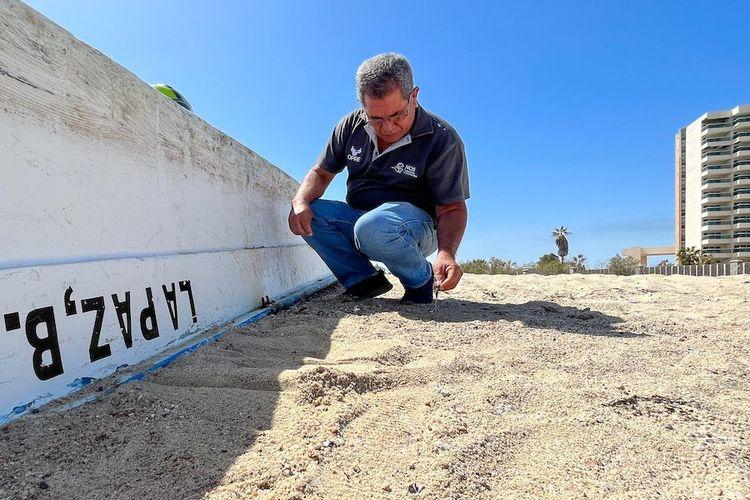 Guillermo Méndez, a fisherman and member of the restoration project in the community of El Manglito, shows with a wrench what the process of planting axe calluses is like. Photo: Andrés M. Estrada.
Guillermo Méndez, a fisherman and member of the restoration project in the community of El Manglito, shows with a wrench what the process of planting axe calluses is like. Photo: Andrés M. Estrada.
This was a significant drop from the 10 million callos that, according to fishermen, were thriving before the 2000s. The near collapse of the species led Robles, Méndez and Hubert to embark on the callus restoration project.
Everyone aboard the
Robles Street restoration train was inspired in part by the restoration of Chesapeake Bay, on the east coast of the United States. At the end of the 19th century, Chesapeake had been the world's largest oyster fishery, but water pollution and overfishing caused its collapse in the 20th century. To restore the ecosystem, government authorities, NGOs and community members came together to improve wastewater treatment and eliminate toxic sediments and pollutants, among other actions. Today, the estuary is gradually recovering.
In La Paz, NOS decided to approach only the community at that time, because the local government experienced a very tense political climate that made it difficult to build supportive relationships.
One of the biggest challenges would be to stop all fishing during the restoration period, especially since anglers would not have many alternative sources of income.
The team would have to try to bring the callus population to a level that could begin to feed the community, and then to numbers that would allow selling outside of it, while preventing anyone from extracting the calluses that were being cultivated.
For helping to cultivate callus, fishermen could obtain financial aid of between 1,500 and 1,800 pesos (85 and 103 dollars) per week. This was much less than what they could generate with illegal fishing.
“We were angry with our husbands,” recalls Claudia Reyes, who arrived here at the age of 17, when she married one of the fishermen. “It was hard for us to understand that we had lived off illegal fishing all our lives and we had to stop it.”
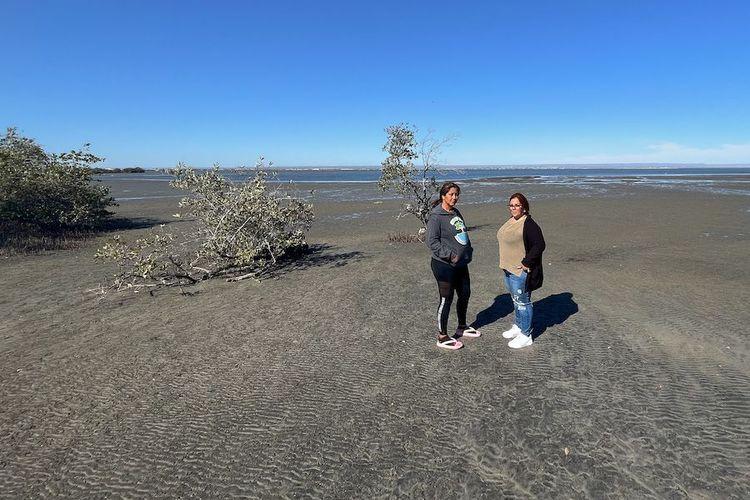
Claudia Reyes (left) and Daniela Bareño (right), members of the Guardians of El Conchalito, a women's group that protects this area full of mangroves near El Manglito. Photo: Andrés M. Estrada.
Reyes is now 39 years old and is part of the Guardians of El Conchalito, a group of women who protect an area full of mangroves called El Conchalito, near El Manglito.
The most difficult thing for everyone, he says, was to go from having “plenty of money” to suddenly having almost nothing and starting to take care of the product that was in short supply.
“But little by little we understood, we worked in collaboration with NOS in the restoration of our products and of ourselves as fishermen and family.”
Their neighbors, the brothers Guillermo and Hubert, didn't do well when they tried to convince the rest of the fishermen that implementing the project would be to improve the place. “They told us that we were traitors,” Mendez says.
However, after learning about the significant loss in the callus population and participating in its counting, the fishermen reconsidered their position and organized themselves to recover the species. They wanted to preserve the coast and its resources for future generations.
Sow seeds for the future
The sun's rays penetrate Guillermo's copper skin, while the coming and going of the tiny waves of the sea sounds in the background.
Guillermo, Hubert and other fishermen in the community have been cultivating callos since the project began in 2011. Guillermo says that cultivation usually starts in May.
After breeding callus larvae in agricultural baskets, they plant them on the seabed, in waters 1.5 meters deep. When calluses have grown to about 6 cm, the community covers them with sand. From there, the callus feeds on plankton and other microorganisms.
 Hubert Méndez (right) removes a callus from his shell. After four years of restoration work, the population of this species was around 4 million. Photo: Andrés M. Estrada.
Hubert Méndez (right) removes a callus from his shell. After four years of restoration work, the population of this species was around 4 million. Photo: Andrés M. Estrada.
The harvest season is between August and the end of September, when seawater is colder.
“Once we plant the calluses, we protect them with a silk mesh so that they are protected from predators such as callus and crab, until they grow bigger,” he adds. “Then the mesh is removed and months later they are harvested.”
After four years of cultivation work, the callus population had reached around 4 million, according to a count carried out by NOS in August 2015. This figure was higher than 40,000 in the initial count.
However, that same year fate played tricks on them with an invasive marine species: the tunicate, similar to a sponge, arrived like a plague attached to a ship and began to proliferate there, according to the fishermen.
Diving every day to remove the tunicate, the fishermen removed more than 200 tons, but failed to exterminate it. Between 80% and 90% of the calluses died, the fishermen estimated. Destruction was inevitable. Then, that same year, a hurricane inexplicably destroyed almost all the tunicates. The restoration work was able to start again.
Women, Guardians of El Conchalito
Women have played a critical role in the recovery of axe callus. During the first year of the project, in 2011, poachers entered the callus restoration area in El Conchalito.
No one on the board of directors of the male-dominated fishing organization El Manglito seemed to do anything about it. So, in 2017, a group of 22 women asked for space within the project.
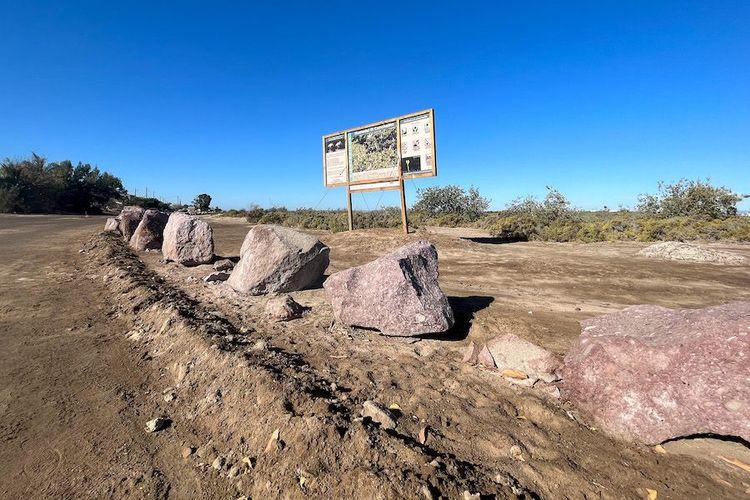
Rocks placed to prevent vehicles from entering the El Conchalito mangrove area, where the population of axe calluses is restored. Photo: Andrés M. Estrada.
NOS could only offer salaries for seven people to monitor El Conchalito. The women decided to divide the payments in half, so that they could have places for 14.
When they began to cultivate calluses, looters threatened them verbally and even with knives. Sometimes, those who stole your product were people from El Manglito himself, who didn't agree with the restoration efforts. Some were related to the same guardians.
In 2019, there was a rapprochement with the authorities, who supported them in placing a fence of huge rocks to prevent vehicles from entering. Later, they managed to obtain financial aid from the authorities. Nowadays, the Guardians are one of the most active pillars of the community and an example for women fishermen from other regions of the country, where they have come to share their experiences and give workshops. 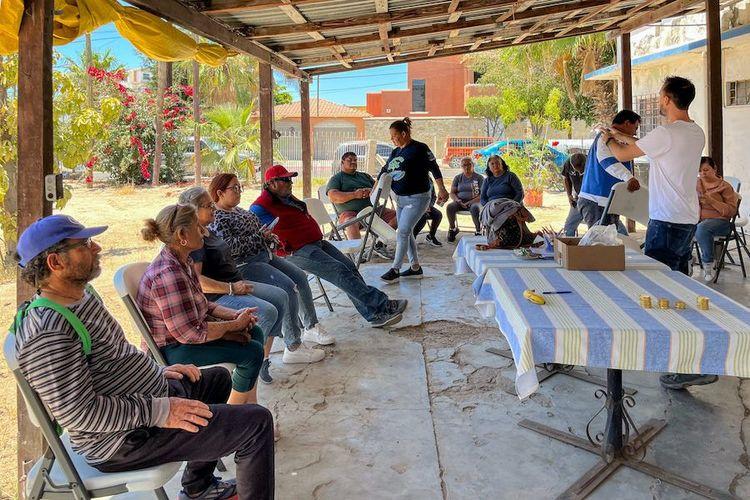 Residents of El Manglito during a workshop on the use of new technologies to help teamwork. Photo: Andrés M. Estrada.
Residents of El Manglito during a workshop on the use of new technologies to help teamwork. Photo: Andrés M. Estrada.
Expanding ecotourism
The restoration has been swimming against the tide, but it seems to be working. Although NOS has not done a systematic count of calluses since 2015, based on their knowledge and the guided tours they usually provide, Hubert and Guillermo state that the population has increased and the cove area has recovered. Fishermen estimate that there are now more than a million calluses.
This allows the community not only to self-consume but also to sell fresh, vacuum-packed and frozen products nationwide.
Their work has led the community to create the Organization of Fishermen Rescuing the Cove (OPRE), made up of more than 100 fishermen. The OPRE helps its members obtain fishing permits from the authorities, which improves fishing management and reduces unregulated extraction in the area.
They have also ventured into ecotourism, with the launch in 2020 of “Manglitour”: visits in which guides explain how to cultivate axe tripe, clams and oysters); the history of the restoration of the place and the importance of vigilance. Although it had to be paused around the time of the Covid-19 pandemic, it resumed recently. The Guardians are also seeking to venture into sustainable ecotourism in the El Conchalito area, with bike rides.
Back on the ship, Hubert grabs his very sharp knife and inserts it into the hard cover of the callus, revealing a round, fluffy figure inside.
“Come on, try it! That way, fresh out of the sea, you eat more delicious.”
The flavor is mild, salty, meaty, and is reminiscent of cold cooked shrimp and fish. Delicious.
*This article was originally published in Chinese Dialogue.
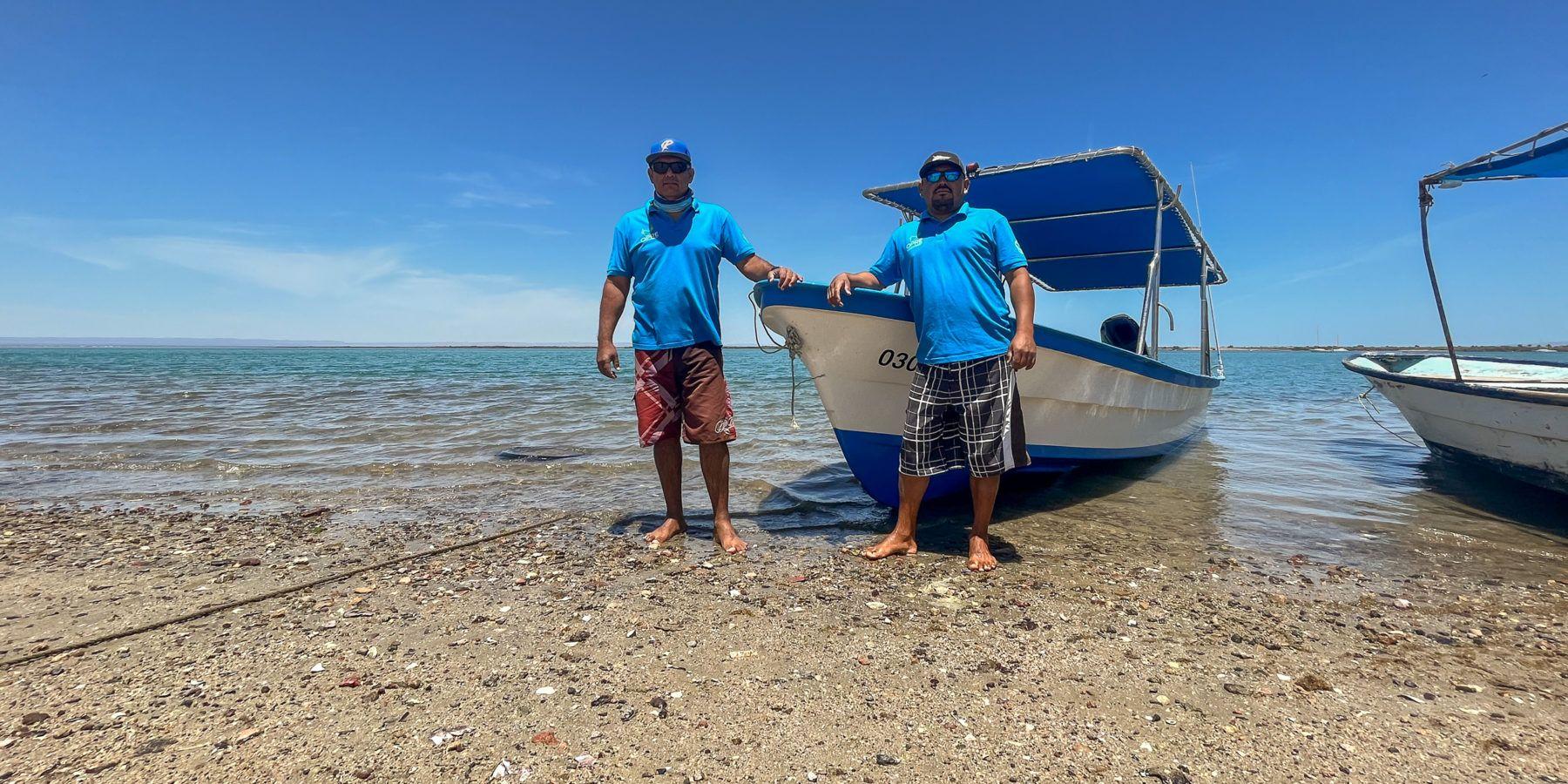


Comentarios (0)